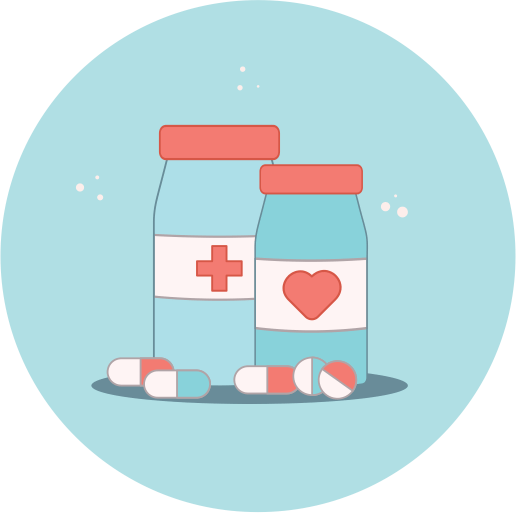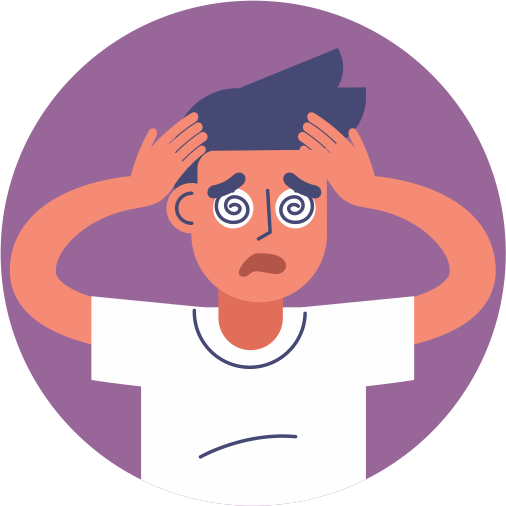TABLE OF CONTENT
If you’ve been in a car accident recently or had a slip-and-fall injury, you should be aware of whiplash, its symptoms, how to diagnose it, and the available whiplash treatments. When you are involved in an accident, many people are unaware that whiplash doesn’t always show symptoms.
In reality, the effects of whiplash may not be noticeable for days or even weeks after the injury. This is particularly true for those unaware of whiplash, its symptoms, and what to do if they have been in a whiplash injury.
This blog covers the versatility of whiplash treatments, diagnosis, prognosis, recovery, and rehabilitation. We also provide guidelines for preparing for an appointment with your general practitioner if you have suffered from a whiplash injury.

What is Whiplash (Overview)
When someone’s head is rapidly whipped forward and backwards, frequently due to an unanticipated event, including a road traffic accident, slip-and-fall injury, or contact sports, the result is whiplash.
The soft tissues of the neck may experience tiny rips and overextension due to whiplash. Because of this, whiplash is often referred to as neck strain or sprain.
Whiplash symptoms might vary and are frequently subtle. They can vary from person to person. The illness frequently manifests as pain and stiffness in the neck, back and shoulders, but many symptoms are less evident.
The lesser symptoms of whiplash include the following:
- Unexplained headaches
- Unsteadiness and hazy vision
- Irritability and distress
- Difficulties swallowing
- Ringing in the ears
- Trouble sleeping
- Issues with focus and memory
- Upper or lower back discomfort
- Tingling in the arms
- Limited mobility
- Sensitivity to light
- Anxiety and depression
Whiplash injury victims may have these problems for a long time without ever realising they are related to whiplash. Therefore, it is always advised to consult your general practitioner if you have been a part of an accident for whiplash treatment or ruling out whiplash chances.

Whiplash Diagnosis
Usually, your general practitioner can identify whiplash based on how the event happened, the normal symptoms, and your physical examination. Your GP can check for any indications of injury to your spine’s vertebrae, spinal nerves, or spinal cord by looking at your neck and arms.
Additional testing might be suggested if these are suspected, including but not limited to the following:
X-ray Scan: If you have any pre-existing condition, X-rays can help identify the connection between the pain and your pre-existing condition, including arthritis. It can likewise rule out fractured bones and other disorders such as arthritis, spine fractures, and dislocations.
CT Scan: A more detailed image of the bone and soft tissues can be seen on a monitor during a CT (computerised tomography) scan because numerous X-ray images are acquired from various angles.
MRI Scan: A detailed image of the damaged area is gradually created during an MRI (magnetic resonance imaging) scan using radio waves and a strong magnetic field. Soft tissue injuries will be easy to spot for the doctor.

Whiplash Treatment

Whiplash treatment aims to reduce neck stiffness and pain while also repairing damaged tendons, muscles, and ligaments. Your doctor will decide on a specific course of treatment for whiplash based on the following:
- Age, general health, and medical background.
- How serious your injury is.
- Your tolerance for treatments, operations, or medications.
- Expectations about how your injury will progress.
- Your preference or opinion.
In some cases, a healthcare provider may also refer a patient to a specialist, such as a neurologist or an orthopaedist, for further evaluation and treatment. You are likely to receive the following whiplash treatments that could reduce whiplash symptoms:
Ice Bag Therapy
It is also known as the go-to whiplash treatment. All you need to do is try to apply an ice pack as soon as the accident occurs to help reduce swelling (inflammation). Avoid applying ice to the skin directly by wrapping it in a towel or other protection barrier. A session with an ice pack should last 10 to 30 minutes.
Regular Exercise
Patients should make an effort to move their necks normally; it’s crucial to do this while following the instructions of a licensed healthcare provider. If the symptoms are severe, the person might need to rest their neck before they or they can move because of the pain.
The patient should gently exercise the neck to prevent stiffening when pain levels permit. Slow movements in each direction should be made with the neck to increase the range gradually.
OTC Medications
An injection may occasionally be used to target a particular location. Examples include cervical epidural steroid injection (to lessen inflammation caused by a herniated disc in the nerve and tissue), cervical facet joint injection (to relieve pain in the joint), and trigger point injection (to help an irritated muscle bundle).
Steroid Injections
Pain relievers, muscle relaxants and OTC (over-the-counter) medications like Tylenol (paracetamol) can lessen the discomfort from whiplash injuries. Not simply when the pain is acute, some doctors may urge patients to use painkillers or muscle relaxants on a regular basis. Avoid exceeding the recommended dose. Thus, before consuming any painkillers, be sure to speak with your doctor.
Cervical Collars
In the past, soft foam collars were frequently used to treat whiplash injuries. Long-term neck immobilisation may impede recovery because it reduces muscle mass and strength. A cervical collar should typically not be worn for longer than three hours at a time if one is required.

Recovery Post Whiplash Treatment

Pursuing whiplash treatment immediately post-whiplash is the first step. However, how soon you will recover depends on how severe your whiplash is. Most situations are resolved in a few days. Other neck strains, however, can take weeks or more to recover.
You are likely to receive the following recovery options after you have been diagnosed and have pursued whiplash treatment:
Physical Exercise
A physical therapist (or a physiotherapist) may suggest neck exercises in addition to using massage and manipulation. The physical therapist may also apply cold, heat, electrical stimulation, or ultrasound to lessen discomfort. The strength and flexibility of the neck can be improved by a therapy programme administered by a licenced physical therapist or other skilled health care provider, which in certain circumstances, can lessen pain and relieve pressure on the spine.
Osteopathic Care
Another option for pain management and whiplash treatment is osteopathic care. Osteopaths correct misaligned facet joints and vertebrae to enhance spinal health, which can impact one’s physical well-being. Osteopathy is frequently used to treat whiplash in Western Europe. Osteopathic medicine treats sports, back, and neck problems using manipulation techniques.
Psychological Counselling
A mental health expert can offer counselling or psychological therapy to assist in working through, comprehending, and managing the concerns if a person has depression or post-traumatic stress disorder after suffering a whiplash injury, for example. They may also prescribe medications as needed.
Manual Adjustment
Chiropractic adjustments can help to straighten the spine and increase the range of motion in the shoulders, neck, and other immobile areas. The spine is often adjusted manually by a chiropractor or other licenced healthcare provider to improve the range of motion and lessen pain.
Acupuncture Therapy
Acupuncture, which involves inserting tiny needles strategically in different places of the body depending on the disease being treated, has been said to have positive effects on some people. When carried out by a certified acupuncturist, the procedure is painless and safe.
Correct Posture
To prevent neck discomfort and stiffness from worsening, a competent healthcare expert can instruct the patient on how to keep their back straight, whether walking, standing, or sitting. While sleeping, a firm pillow helps support proper posture. For advice on improving posture and pain management, consult a physical therapist.

Whiplash Prognosis
Most whiplash sufferers recover in 3 months or less. Whiplash-related symptoms and diseases may persist for a long time. The following risk factors could suggest a prolonged recovery period from a whiplash injury:
- If you have experienced acute discomfort at the time of the injury, your risk heightens. A person may have more serious damage if they feel excruciating pain immediately after being hit.
- PTSD may include wanting to forget the event or thinking about it continuously, avoiding driving or going anywhere near the scene of the accident, becoming more easily frightened or anxious, experiencing sadness, or having difficulties sleeping.
- Age-related degeneration and pre-existing problems in the spine render older people more susceptible to whiplash injuries.
- Women may be more prone to whiplash injuries since they typically have smaller neck structures and muscles.
Preparing for Whiplash Treatment
To get ready for a whiplash injury appointment, follow these instructions. You will be better prepared for your appointment if you follow these instructions. In the same way, you’ll be able to maximise your time with your general practitioner.
- Gather your medical history and any medications you are presently taking
- Please write down your symptoms, including when and how severe they started.
- Bring pertinent documents, such as a copy of the accident report, medical reports, etc.
- Compile a list of inquiries for your healthcare provider.
- Organise your transportation to and from your appointment.
- Dress comfortably so that your doctor can inspect the affected area with ease.
Key Takeaways
A prevalent and crippling condition that can have an adverse effect on your daily life is whiplash damage. Early detection and intervention using the help of various whiplash treatment and therapy can stop the emergence of more severe or chronic illnesses.
Get in touch with us to learn more about how our team of medical experts can assist you in recovering from a whiplash injury and regaining your quality of life.
References and Further Reading
- https://www.nhs.uk/conditions/whiplash/
- https://www.painandspinerehab.com/blog/why-whiplash-pain-is-often-delayed
- https://uppercervicalawareness.com/watch-out-for-delayed-whiplash-symptoms/
- https://patient.info/bones-joints-muscles/neck-pain/whiplash-neck-sprain
- https://www.webmd.com/back-pain/neck-strain-whiplash
- https://www.ascenti.co.uk/article/how-to-treat-whiplash
- https://www.ninds.nih.gov/health-information/disorders/whiplash
- https://www.hopkinsmedicine.org/health/conditions-and-diseases/whiplash-injury
- https://www.webmd.com/pain-management/guide/pain-management-whiplash
- https://www.spine-health.com/conditions/neck-pain/whiplash-treatments-and-recovery




